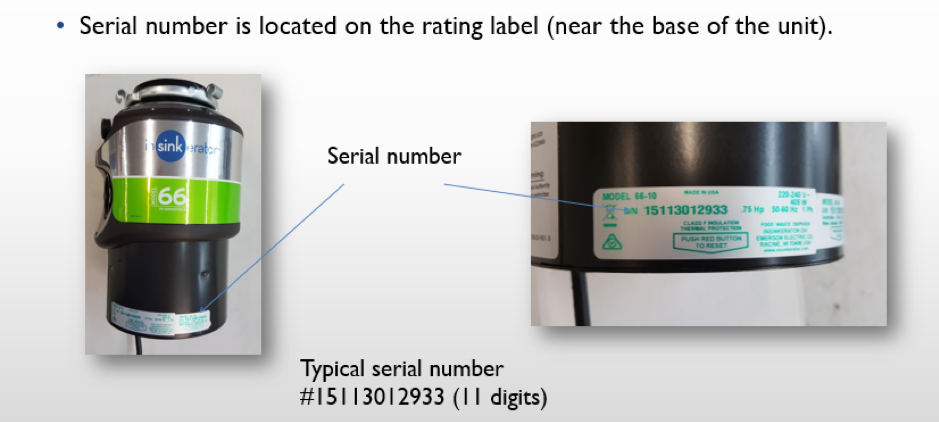Insinkerator Food Waste Disposer – Frequently Asked Questions
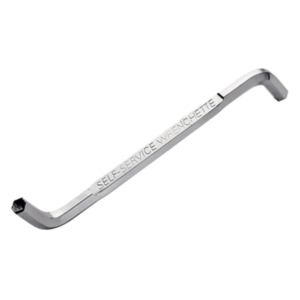
- There are a few common faults that you may be able to resolve yourself, e.g. jamming, blockages, tripped overload switch.
- Firstly, when fault finding, consider the type of food waste disposer you have.
- Check that the power plug is still connected under the sink. Sometimes this can be accidentally pulled out or switched off when items have been placed into the under-sink cupboard.
- The overload/reset button has possibly tripped (situated under the base plate on some machines and on the side where the power cord enters the unit). Disconnect the food waste disposer from the power outlet. Check there is nothing stuck in the machine and that the main plate, not the hammers, turns freely.
- Use the supplied jam key (see image) to manually grind through any obstructions.
- Wait 5 minutes to allow to cool, then press the reset switch and try switching on the food waste disposer again.
- Confirm there is no power fault at the outlet by plugging in another appliance and testing.

- If none of these resolves the issue, you will require a service visit.
- Ring us on our toll-free number – 0800 200 510 to arrange a service agent
- Most likely there is something stuck in the food waste disposer. Disconnect the food waste disposer from the power outlet and check for an obstruction. This can be done by inserting the Jam key or a suitably sized Allen key in the centre of the base plate (underneath the machine). Check the main shredder plate is not floppy (indicating that it has detached from the motor shaft) and check for water leaks, stains or corrosion on the underside of the food waste disposer.
- The two latter faults indicate a motor shaft or seal failure which will require a replacement food waste disposer.
- If none of these resolves the issue, you will require a service visit.
- As your food waste disposer wears it will cut the scraps larger and in time you will possibly experience the odd blockage in the waste pipe.
It may have one or both hammers jammed. - Replacement or service may be required.
- Food scraps can get lodged in the grinding teeth allowing the lugs (two opposing each other and fixed to the main plate inside the machine) to make contact with each revolution
- Or the lugs inside the food waste disposer have worn the fixing rivets. This allows the lugs to contact the outer grinding ring resulting in a clattering sound.
Replacement or service may be required.
- An InSinkerator® food waste disposer is designed to be maintenance-free. The best way to keep it in good condition is simply to use it regularly. Keep it clean with a moderate stream of cold water after you’ve used it.
- Put a dozen ice cubes into the machine and turn the water on, turn on the unit and run for 5-10 seconds. This will help clean the hammers and clear the grinding chamber of any stubborn debris
- You can use bicarbonate of soda (baking soda) to freshen up the waste disposal unit, particularly if a little food waste has been left inside it. And here’s an InSinkErator® tip for extra freshness – grind a lemon or citrus fruit in the food waste disposer for a few seconds without water.
- Never put bleach/acid in the food waste disposer.
- The cost of operating any food waste disposer is relatively low. InSinkErator® food waste disposers grind faster, so they use less electricity. Operating a .55 HP food waste disposer for a month consumes power equal to a 100-watt light bulb switched on for an hour.
- Food waste disposers use very little water, but the speed of an InSinkErator® food waster disposer keeps it to the absolute minimum — on average just a .04% increase in water consumption.
- Average annual electricity consumption cost for a 4-member household is less than $2.00
- Average daily water consumption for a 4-member household 5L/day
- Food waste is fed into the food waste disposer together with water from the cold tap. The food waste is simply and quickly ground into fine particles, no knives and no blades. The food waste is then flushed through the waste disposer and into your normal waste system. The InSinkErator food waste disposer is designed to cope with most types of food waste, including small cooked chicken bones, meat, fish, peelings, eggshells, nuts and much, much more.
- Only a few seconds, although it depends on the quantity and type of waste. The sound of the food waste disposer will change when there is no longer any food waste in the grind chamber and the impellers spin freely. After all food waste is ground, turn off the disposer and let the water run for about 15 seconds to flush the waste out of the grind chamber and out to the water drainage/sewer pipes. Only a small amount of water, time and effort are required.
- Food waste disposers are built to rigorous electrical and appliance standards. Contrary to what some may think, they do not have knives or blades…an assumed cause of safety concern.
- Most forms of food waste can be put through the food waste disposer — bones from fish and poultry, meat, cooked chicken bones, fish scraps, vegetables, fruit, egg shells, and much more. Very stringy or fibrous foods such as celery should be avoided. Food waste disposers are designed for food waste only and packaging materials should not be put into the disposer.
There are 4 easy steps to operate a disposer:
- Collect all food waste in the sink during food preparation and when scraping your dishes.
- Turn on the cold-water first, then followed by the food waste disposer.
- Feed the food waste into the food waste disposer. Listen for the food waste disposer to finish its work.
- After grinding is complete, turn off the food waste disposer and let the water run for a few seconds to flush the drain lines.
*Never pour grease or fat into disposer or any drain.
- Standard food waste disposers operate with some noise
- Evolution models are much quieter. In some cases, all you hear is the sound of water running. Advanced sound deadening features are included, similar to quiet dishwashers.
- Standard disposers offer one grind stage
- Evolution models offer advanced, multi-stage grinding systems. Enable disposer to grind a greater water variety of foods more efficiently
- Biogas (or “biofuel”) offers a renewable and more environmentally friendly energy resource alternative to fossil fuels. When treating wastewater, methane gas is produced. A capable wastewater facility can capture the biogas and use it to power the plant.
- Biosolids are the nutrient-rich organic materials that result from the treatment of wastewater. Biosolids contain many essential plant nutrients and can be recycled as fertilizer or soil conditioner for use in agriculture.
- According to more than two dozen independent studies from around the world, food waste disposers do not harm municipal sewer systems. In the United States, installing a disposer also contributes one point towards achieving the ANSI/ICC National Green Building Standard.
- If the residential food waste disposer is installed in any commercial type set up there is no product warranty/guarantee on these units. We have purpose-built commercial units that carry a 1-year warranty from installation.
LC – 50 >
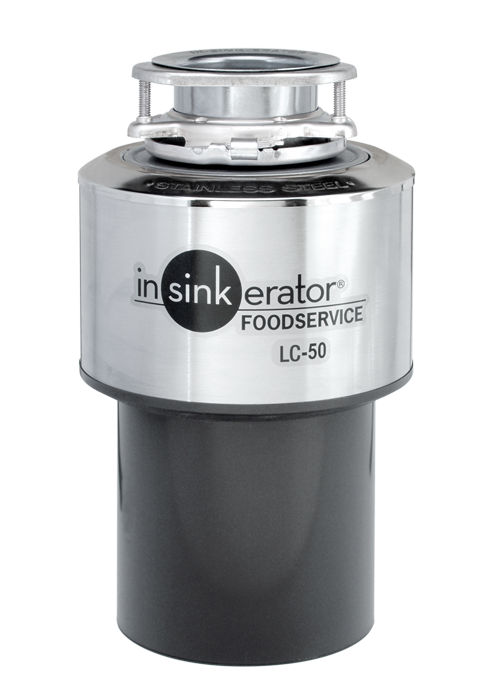

SS – 100 >
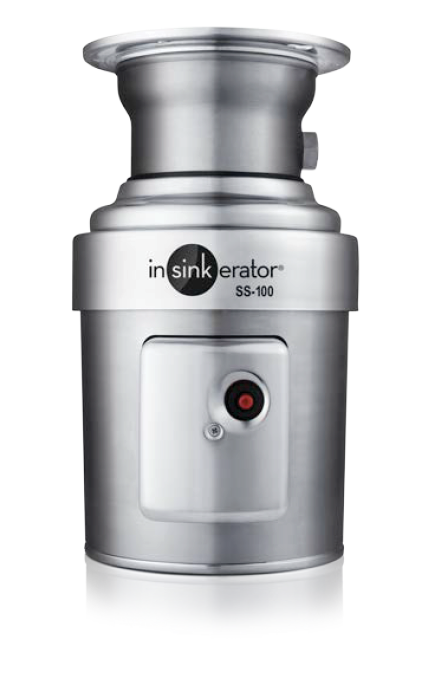

SS – 200 >
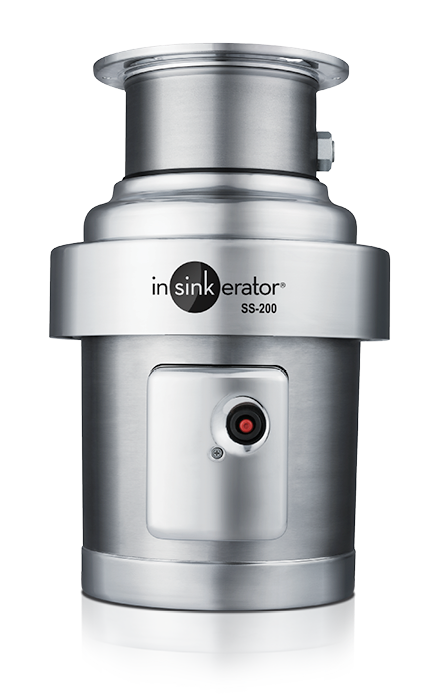

SS – 300 >


SS – 500 >
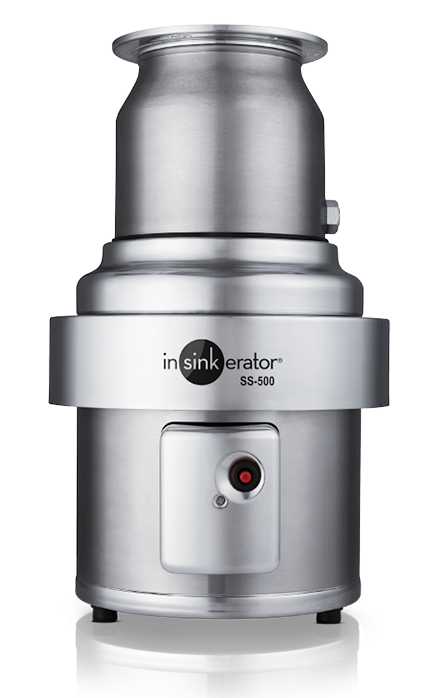

-
Models 45/55/65 have been superseded by models 46/56/66
MODEL 46
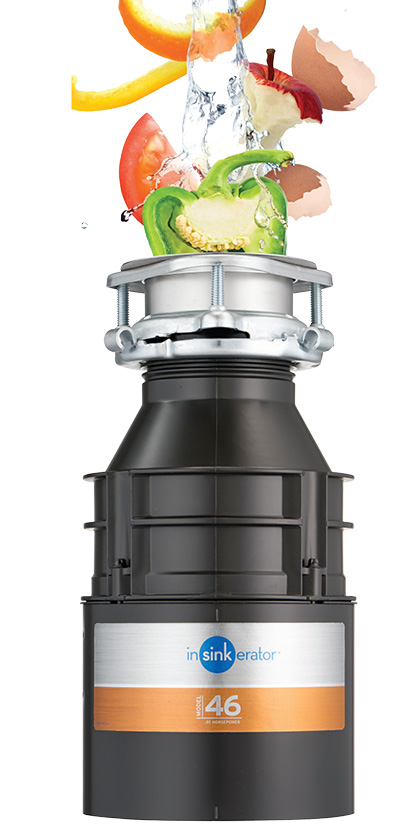
MODEL 56

MODEL 66
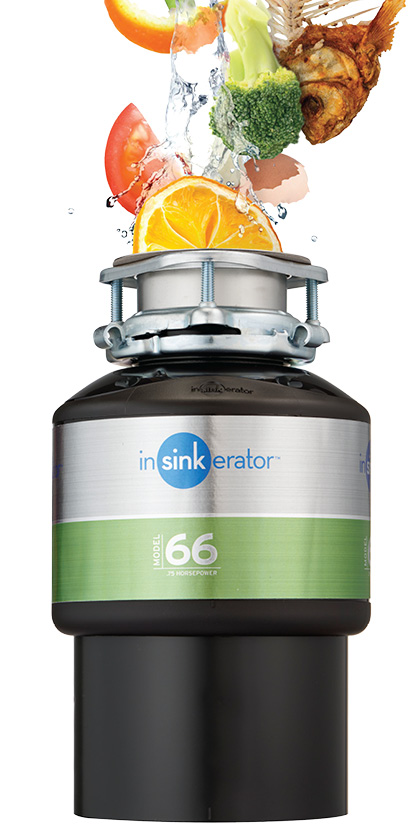
| Emerson E20 | 2 Years |
| Model 46 | 2 Years |
| Model 56 | 3 Years |
| Model 66 | 4 Years |
| Evo 100 | 5 Years |
| Evo 200 | 10 Years |
Please see link below for our extensive range of spares parts
- https://www.insinkerator.co.nz/shop/
We suggest using one of our service agents or a relevant trade qualified plumber

What size is the air switch hole in the bench?
32-34mm
What’s the cost of an Air Switch?
- Air Switch covers and switches are available from our retailers or our online store
- https://insinkerator.co.nz/store/
At one of our leading retail stockist listed here – https://www.insinkerator.co.nz/where-to-buy/retailers/


